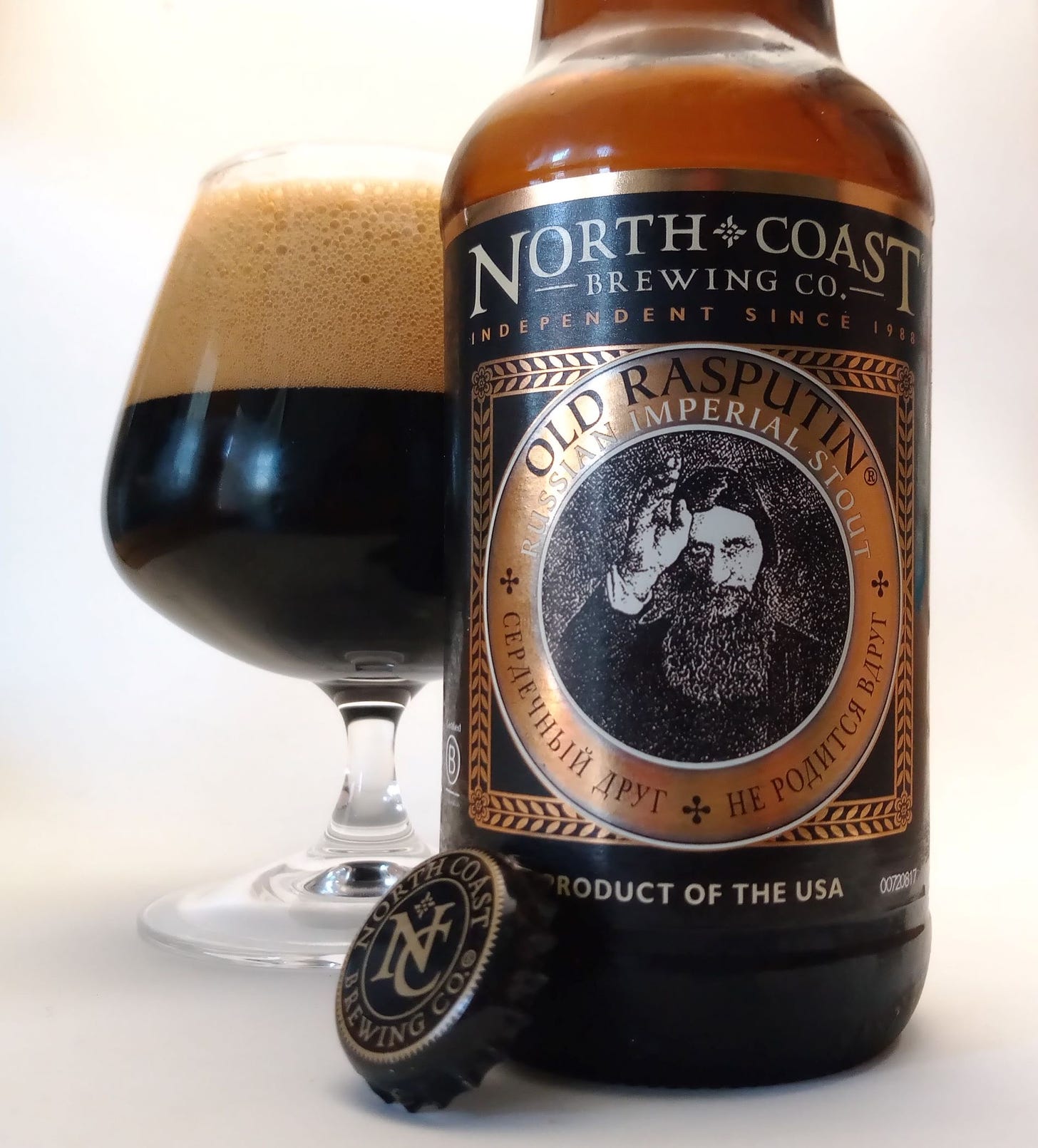Imperial Stout, among the richest and strongest of beer styles, can also claim to be a history lesson in a bottle. Imperial stout was originally brewed by the major porter brewers in London as an “extra stout” porter for export to the Baltic countries and Russia from the late 18th century onward. It gained its title as a drink supplied to the Russian imperial court of Czarina Catherine the Great. The artist Joseph Farington wrote in his diary in 1796, “I drank some porter Mr. Lindoe had from Thrale’s brewhouse. He said it was specially brewed for the Empress of Russia.”
Thrale’s Anchor Brewery in Southwark had been bought by Robert Barclay and John Perkins in 1781, and it was Barclay Perkins’ Russian imperial stout that became the classic example of the style. A recipe from 1856 shows it had an original gravity (OG) of 1,107 — which means it was almost certainly over 10% ABV — with a resounding smack of bitterness imparted by more than 10 pounds of hops per barrel.
But Barclay’s was not the only London brewer that became famous for this powerful beer. Reid of the Griffin Brewery in Camden rolled out nothing but stout and porter until 1877, with the strongest regular brew being XX Imperial, sold on draught at shellfish houses like The Whistling Oyster off Drury Lane. But even this was not Reid’s most imposing imperial beer.
Outside London, a few other British brewers also adopted the style. Brain’s Brewery in the coal port of Cardiff, Wales, was well known for its mischievous “Little Imp” imperial stout before World War I.
Most breweries did not bottle their own beers in the 19th century, preferring to ship barrels to professional bottlers who then sold the beer under both the brewer name and their own. This left the market open for enterprising middlemen like Belgium-born London beer merchant Albert Le Coq. In 1974 Norwegian divers recovered bottles from the 1869 Baltic shipwreck of the Olivia. They were stamped “A Le Coq” and contained his imperial Extra Double Stout. Le Coq had built up a large trade to Russia. He was so successful that Russian brewers began imitating the style, so to compete effectively Le Coq took over a brewery in Tartu in Estonia in 1910. It proved a troubled venture and was eventually nationalized by the USSR in 1940.
Most other British brewers had abandoned the Russian market before World War I, but Baltic brewers sought to keep the strong stout tradition alive. In Finland, Sinebrychoff, founded by a Russian in 1819, had originally rolled out Koff porter before switching to lager after 1853. But it revived the intensely bitter, roasted beer (7.2% ABV) in 1952. Polish brewers such as Okocim and Zywiec also kept faith with powerful porters, although they were now brewed with lager yeasts and eventually lost much of their powerful roast character. Even Danish lager giant Carlsberg got into the game, brewing a Gammel (old) porter imperial stout (7.5% ABV).
In Britain only Barclay Perkins kept the imperial flag flying, despite the severe disruptions of two world wars, with the focus switching to supplying the home trade with a warming winter stout matured in bottle for at least 1 year at the brewery. And the maturation period grew longer. In 1953, when vintage labels were introduced, the first was for the 1949 batch.
After Barclay Perkins merged with neighbor Courage in 1955, production moved to Courage’s brewery by Tower Bridge and then, when that plant closed in 1982, moved out of London to John Smith’s of Tadcaster in Yorkshire. The distinctive stout was gradually being lost inside a giant brewing company that was no longer interested in such esoteric beers. During the late 1980s and early 1990s Courage imperial stout emerged every couple of years, with the last in 1993.
But the empire fought back, helped by another drinks merchant, this time in America. Merchant du Vin of Seattle, intrigued by the dark beer’s colourful history, encouraged John Smith’s family rival in Tadcaster, Samuel Smith, to brew an imperial stout (7% ABV) for export to the United States in the early 1980s. This helped to inspire American interest in the style, with some of the new craft brewers producing bold examples. Today imperial stout is among the most popular strong beer styles among American craft brewers, and the United States now produces more of it than any other country. Modern interpretations sometimes include some time in bourbon barrels, lending rich notes of vanilla and coconut. Albert Le Coq’s name and his beer were resurrected in 1999 when American importer Matthias Neidhart commissioned Harvey’s brewery in Lewes, England, to brew imperial Extra Double Stout (9% ABV) in his name, using a facsimile of the original label on the corked bottle. And imperial stout has returned to the Baltic countries, with many craft brewers producing one as a winter specialty. Most modern imperial stouts show a rich black color, sharp bitterness balanced against notable residual sugar, and waves of dark fruit melded with chocolatey, coffee-like roast, sometimes trending into licorice notes.
They tend to be perfect beers to enjoy in front of a winter fire, and they make fine accompaniments to cheeses and desserts. Good examples, if kept well, can age and improve in the bottle for decades. But for me personally, that aging process will likely never happen. They’re too good to keep bottled up for long.




